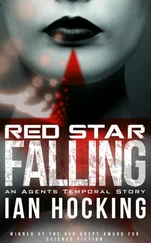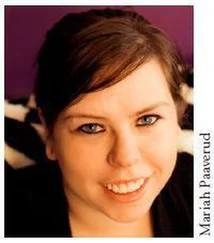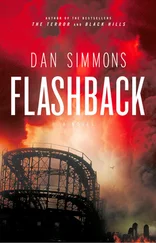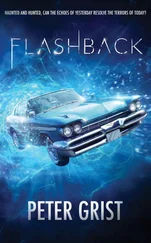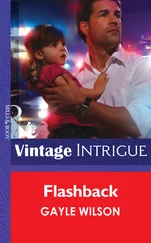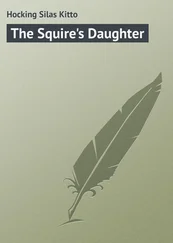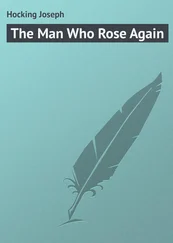~
Hrafn, and the small audience, leaned forward to scrutinise the photograph that Marcus Bower of Human Factors projected on the screen. The image had been recovered from a charred digital camera. It was pixellated and oddly coloured. It showed a woman in mid sprint. She was running down the aisle of the aircraft. A blur in her hand might have been a gun. Hrafn studied the object as Marcus zoomed into it and resumed his interpretation. There was a Holmesian touch to the fervour with which the psychologists and engineers swooped on the slightest of details. Did the shape of her hair indicate acceleration, and thus the aircraft’s movement? Did lighting inconsistencies imply electrical problems? And, at root, was this person working for the good of the passengers, or had she precipitated the crash? Both? Hrafn accepted a coffee as Marcus wrapped up his presentation. It was midnight, and he had a 6 a.m. appointment with Chancellor Schröder. He said, ‘Marcus, I just came from the morgue. Nicolleta Valli has red hair in her passport photograph, but she recently dyed it blond. That leaves Saskia Dorfer as our candidate for Ms X.’
‘Sure you looked at the right body?’
‘Certain.’
‘If we go for Saskia, then there’s a Berlin angle.’
‘How?’
One of the group leaned into the coloured beam of the projector. ‘Dr Óskarson, a passenger called Jem Shaw, a Brit, failed to board. Shaw’s ticket was bought using the same EC card as Dorfer. The Berlin police report that Dorfer’s apartment was destroyed by fire several hours after she boarded the plane.’
‘Interesting.’
‘One more thing,’ said Marcus, ‘Petersen, the hiker who filmed the crash, told me about a camouflaged man he saw hanging around the scene. We think the guy is a reclusive woodsman called Tolsdorf. Some kind of Boo Radley figure to the locals, I understand. He only comes down to the village at Christmas for a good feed. But he robbed the local Aldi this morning. Beer.’
‘So? It must get lonely up in the woods.’
Marcus smiled. ‘He left the beer.’
‘I don’t understand.’
‘Emptied the bottles before he left the car park, then took the bottles with him.’
‘Why?’
‘That is the question.’
‘OK. Goodnight, everyone. Tomorrow, we’ll talk to Shaw.’
~
In the hallway, Hrafn found a cleaner mopping the floor. He smiled apologetically and stepped across the wet laminate. He entered the adjacent classroom. Its walls were covered with circuit whiteprints and telemetry plots. Beneath them, partly obscured, were lists of English verbs and pictures of Tony Blair and Big Ben. Trays of wiring and smashed equipment had been laid across the low tables. A dozen men probed the avionics with their pencils, delicate as watchmakers. Hrafn found a warmish coffee near a stack of miniature chairs and touched the shoulder of William Daker, who straightened. He was an old-school Boeing engineer. Gone were the days, told his weary expression, of analogue flight instruments whose dials held their readings at the point of impact.
‘What do you have?’
‘Bad news,’ said William. He indicated a blackened, curved piece of metal. ‘Here are the docking pins for the cockpit CVR/FDR breaker. The short version? The fuse was deliberately removed before impact. I think we can forget the flight recorder data. It’ll be blank.’
Hrafn sighed. If he were abandoned by his primary diagnostic tools—the cockpit voice recorder and the flight data recorder—he might never file a worthwhile report. The solid-state recording chips in each engine were poor substitutes for the parameterised data of the dedicated recorders.
‘Walk me through it. And slowly; it’s late.’
‘If the fuse had been present at impact, we’d expect damage between the pins, where the fuse scoured the housing. But the damage is uniform. The very fact that we haven’t found the fuse is also telling. It should have been near this breaker. We can give you a ninety per cent certainty that the fuse was not on the flight deck at impact. I’ll know when it turns up.’
‘Maybe the pilots were trying to isolate an electrical fire.’
‘Come on, Hrafn.’
‘Come on what?’
William tapped the fuse housing with his pencil. ‘Someone cut the power in a deliberate attempt to obscure the last moments of that flight. We know the flaps were not deployed at impact, so the pilots had not begun the emergency landing procedure. The crash either came without warning, or they were not in control of the aircraft when it happened.’
‘You’re getting way ahead of yourself. Let’s just assemble the data.’
‘At least we got the pilot’s last transmission—‘Stentec.’ What does Human Factors think of that?’
‘It’s STENDEC, and not much,’ said Hrafn. He yawned and twisted his neck. Around him, the men studied their jigsaw. One had a jeweller’s loupe. Another had a shard of plastic in tweezers, which he waggled in saline solution to rinse off the last of the fuel, soil, soot, and human remains. ‘An anagram of ‘descent’. Also, ‘scented’. And ‘send etc’. There’s not much else to say.’
‘I wonder what the woman in the photograph has to do with all of this.’
‘I wonder too.’
‘Night, Hrafn.’
‘Yeah, sleep tight.’
Outside, Hrafn looked into the eddies of snow and saw the sleepy eyes of a beautiful Italian woman. He pictured zipping up the airtight recovery bag to quarantine inside himself the image, the hamburger smell, and the tears of a young co-pilot just happy to bring his 747 in to Singapore. Absently, he zipped his coat as he walked. He would buy Ragnar a book for his birthday. Something funny. With rabbits.
~
The drive to his temporary office in Wallhalla would take half an hour, but, given an empty road, Hrafn could shorten his journey by several minutes, thus banking some bonus sleep. A single windscreen wiper slung the snow clumps aside as he pulled onto the road. He searched the passenger seat for his pocket computer and put a headphone bud into his ear. His eyes switched between the road and the screen. He thumbed through the audio files and hit ‘play’.
‘Hi, this is Siggi,’ said a female voice. ‘I found something after all. Most of it is from the Ministry of Civil Aviation crash report and a book called ‘Star Dust Falling’. There’s a copy in your glove box. I’ve e-mailed you the report.’
Hrafn leaned across and opened the glove box. The rust-coloured paperback rested atop the car’s rental documents. He looked up and corrected his position on the road.
‘ Star Dust ,’ continued Siggi, ‘was an Avro Lancastrian Mk. III, which is basically a Lancaster bomber without the guns. This flight was designated CS-59. Chilean South, service fifty-nine. The operator was British South American Airways. It was merged with the British Overseas Airways Corporation in 1949.’
He watched the curving banks of snow.
‘ Star Dust left Buenos Aires, Argentina, on the morning of August 2nd, 1947, for a short flight across the Andes to Santiago in Chile. It carried four crew and six passengers. They included a Palestinian businessman with a diamond stitched in his suit. A self-made–’
Hrafn paused the audio. He tapped his forehead. Remember the diamond . Then he pressed ‘play’ again.
‘–British businessman, a Swiss playboy, another Brit, an elderly German émigré returning to Chile with her dead husband’s ashes, and a British government agent escorting secret diplomatic documents. As for the flight itself, Star Dust made regular reports throughout its three-hour trip. The journey should have been straightforward from the perspective of the former RAF personnel, though the route was so high that oxygen canisters had to be used. Their navigation techniques were primitive. Advanced American navigation equipment was available, but Don Bennett, the boss of BSAA, refused to install it on patriotic grounds. The crew had to navigate by ‘dead reckoning’ and star fixes.’
Читать дальше

